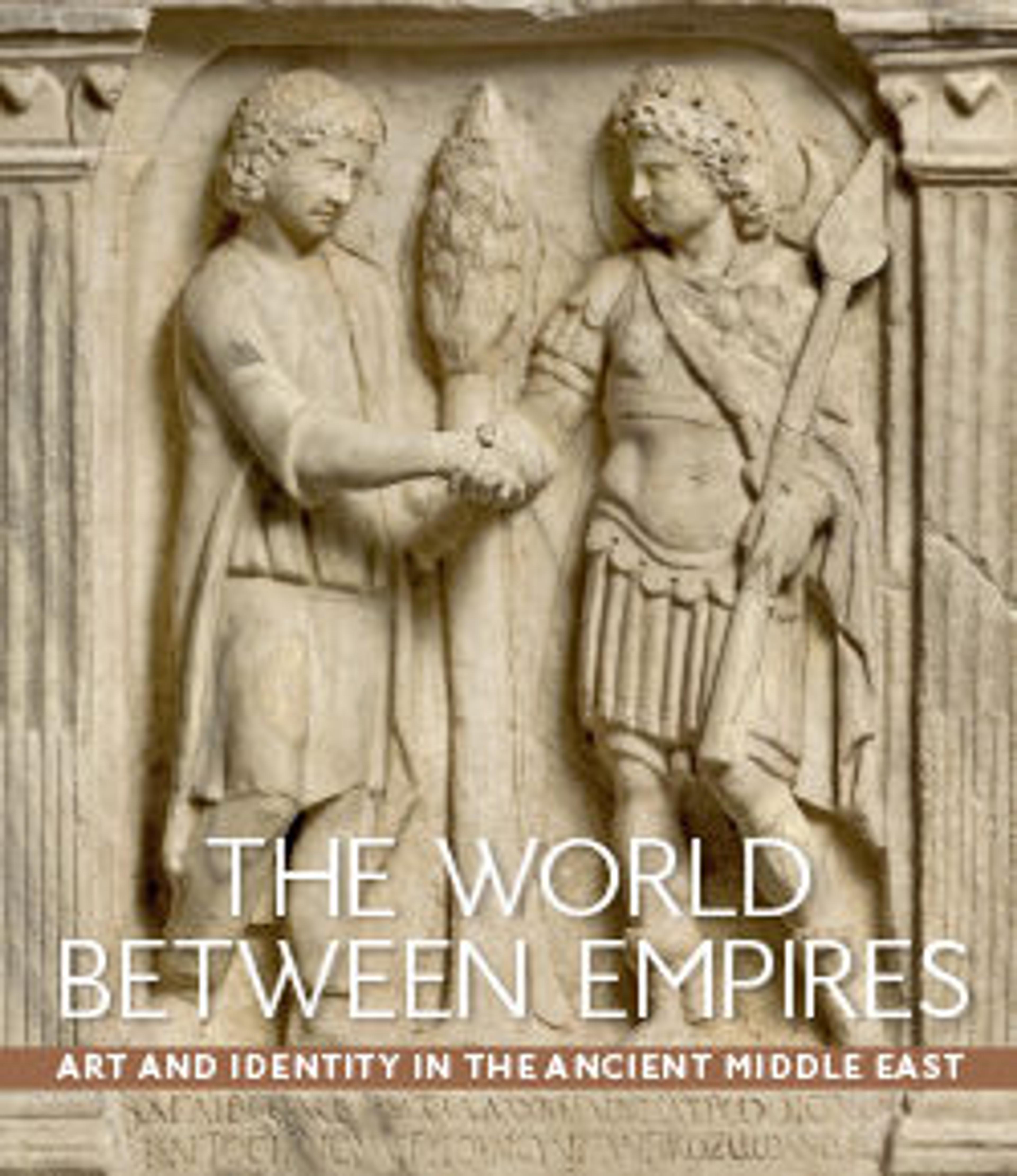Earring in the form of a three-lobed wineskin
Interaction between Mesopotamia and the Greco-Roman world—initiated by the conquests of Alexander the Great, continuing with the influx of Greek merchants and settlers in the Seleucid period and Roman settlements in the area during the Parthian period—had a considerable impact on the style, subject matter, and technique of Mesopotamian art of the first millennium A.D.
This exquisitely crafted earring consists of an Eros-like, winged male youth with long curly hair partly drawn up in a topknot above his forehead. His hands are on his hips and one wing is folded back while the second is missing. There is a suspension loop on his lower body from which hangs a three-lobed wineskin covered with granulation (minute granules of gold attached to the surface). The combination in this earring of Eros, a Greek deity, and the wineskin, a Near Eastern motif that became associated with the worship of Dionysos, shows the seemingly eclectic borrowing from Greek culture that often characterizes the art of the Near East in this period.
The style and subject matter date this earring to the Parthian period, and its provenance suggests that it was originally from Mesopotamia. The calling card of Mr. and Mrs. Thomas Hope accompanied the earring into the Museum's collection, and on the back are notes detailing the history of ownership, stating that it was found by British archaeologist Austen Henry Layard, excavator of Nimrud and Nineveh, around 1845.
This exquisitely crafted earring consists of an Eros-like, winged male youth with long curly hair partly drawn up in a topknot above his forehead. His hands are on his hips and one wing is folded back while the second is missing. There is a suspension loop on his lower body from which hangs a three-lobed wineskin covered with granulation (minute granules of gold attached to the surface). The combination in this earring of Eros, a Greek deity, and the wineskin, a Near Eastern motif that became associated with the worship of Dionysos, shows the seemingly eclectic borrowing from Greek culture that often characterizes the art of the Near East in this period.
The style and subject matter date this earring to the Parthian period, and its provenance suggests that it was originally from Mesopotamia. The calling card of Mr. and Mrs. Thomas Hope accompanied the earring into the Museum's collection, and on the back are notes detailing the history of ownership, stating that it was found by British archaeologist Austen Henry Layard, excavator of Nimrud and Nineveh, around 1845.
Artwork Details
- Title: Earring in the form of a three-lobed wineskin
- Period: Parthian
- Date: ca. 2nd–1st century BCE
- Geography: Mesopotamia, said to be from Nineveh
- Culture: Parthian
- Medium: Gold
- Dimensions: Height: 1 3/4 in. (4.5 cm)
Diameter: 3/8 in. (1.0 cm) - Credit Line: Purchase, Mrs. Vladimir S. Littauer Gift, 1995
- Object Number: 1995.366
- Curatorial Department: Ancient West Asian Art
More Artwork
Research Resources
The Met provides unparalleled resources for research and welcomes an international community of students and scholars. The Met's Open Access API is where creators and researchers can connect to the The Met collection. Open Access data and public domain images are available for unrestricted commercial and noncommercial use without permission or fee.
To request images under copyright and other restrictions, please use this Image Request form.
Feedback
We continue to research and examine historical and cultural context for objects in The Met collection. If you have comments or questions about this object record, please contact us using the form below. The Museum looks forward to receiving your comments.
